Review Article - (2020) Volume 8, Issue 2
The impact of COVID-19 pandemic on the global everyday lives of people, communities, businesses and government activities are what motivated me to provide and enact different, understandings the situations in daily life. These discussions and debates are directly at the core of what western industrialized capitalism had become. However today the research and in-depth analysis that I have done for over the last two decades and is the next economics. Due to my work over the last three decades of research, experiences and investigations into philosophical, historical and linguistics roots to make economics into a science. Starting in early 1994, I was a Fulbright fellow at AAlborg University (AAU), Denmark when I met other professors such as Professor Michael Fast, Professor Xing LI and others with whom I have kept in touch with as wrote papers and books together. When I returned to Northern California, I was recruited as the first manager of technology at Lawrence Livermore National Laboratory (LLNL). Also in 1990s, I was a contributing author and editor for The Nobel Peace Prize for UN IPCC (December 2007).
Due to all of this work, research and experiences, I earned 2nd PhD (as well as 6 peer reviewed published papers) in science. All of this, as well as my volunteer work with the United Nations then, led me to make economics into a science. What I learned at LLNL is science is not just quantitative, but also qualitative as my first book on Qualitative Economics (QE) documents. As a professor at AAU, I kept in touch as asked lecturer during the 1990s and then in 1999 a full-time visiting professor for three years. Then as a full professor at AAU, I predicted “brown and black outs” in Southern California (June 2000). California governor Davis asked me to be one of his five energy advisors. I started QE research in energy problems and solutions. This led to our investigations of quantitative numbers, data that used linear economics of supply and demand. All of was questionable which is why QE was enacted on companies that submitted false data, charts, statistics and numbers. The results for the governor’s legal team by using qualitative and quantitative methods were transformational then and set a methodological approach for other investigations then and now. However, the governor was recalled in late 2003 that led to my forming Clark Communications-Strategic partners for consulting, publishing, updating my pass media with international speeches and more.
Over two decades, I have been doing research on Qualitative and Quantitative Economics (Q2E), since QE is the next economics and my book on circular economics TOC 2020. People, organizations, companies and governments to provide financing for new technologies, systems and create products those are economical and hence viable for the public to acquire for their own use. This is circular economics in action. Therefore, the dependence on linear supply-demand that never worked can be put aside. As this paper will show, CE is applied around the world starting in the EU Nations (EU) January 2015 and now in China (July 2018). Other countries are also enacting CE for small businesses and now a few large corporations and communities who have plans for circular economics as sustainability and other cases below.
Economics; Science; Linguistics; Green; Smart; Theory; Practice; Cases; Climate future
Clark has sixteen books out and papers or more coming with similar titles and sub-titles related to Circular Economics, Environment and Green Development. His next book is on Circular Economics (CE) focuses on academic, education and government institutions that are ideal for sustainability programs, degrees and certificates that could create a new MBA and DBA programs. Enacting CE is very different from conventional linear economics and that is why CE is needed now.
CE rebuilds capital, whether it is financial, manufactured, human, social or natural in large part to reduce and reverse climate change through circular economics as sustainability. To get started, the world is round and not flat. The creation of CE started due to a report by The Ellen Macarthur Foundation (EMF) and others including Clark and Bonato that demonstrate in their first paper about circular economics as seen below (Figure 1) from EMF [1].
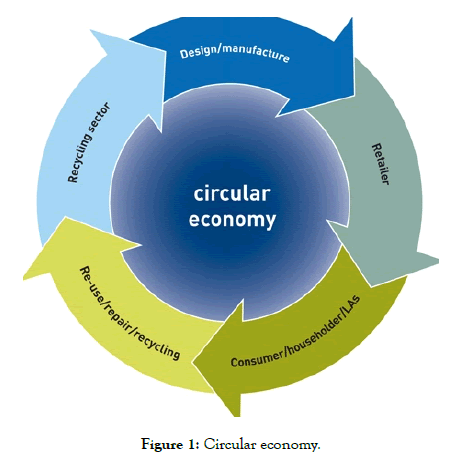
Figure 1: Circular economy.
The nations, cities and local communities are in a round world so that they can be just ‘resilient’ to climate change (which means adapt or accept living with climate change). Instead of resilient, the world needs to stop climate change and recreate a world that is green so that everyone needs to enact for their future, families and the earth. The CE strategy ensures enhanced flows of goods and services that reuse products rather then, waste them and pollute the planet.
To understand CE, there needs to be a review of the history of economics and how it is changing now. There are many examples and cases that exist and even areas such as circular economics in the EU which was enacted in January 2015 [2]. One EU case is the fashion industry experience which demonstrates how uniting business and governments to recover better due to actions such as those noted earlier and discussed below as cases.
One key organization involved early in crediting Circular Economics was the Cradle to Cradle (C2C) that started in San Francisco around the turn of the 21st Century by William McDonough (Bill) as the co-founder and past chair. Bill is not as involved in C2C as he has created a global design and architecture company in The Netherlands. Back then and now C2C has sent up a certification program criteria for standard developments as the Cradle to Cradle Certification.
When Clark served on the C2C Energy Advisory Board, he began the discussion and research on QE that became the key area to enact CE. He gave international speeches that acknowledged his work in QE and CE. About two decades ago Green Bizwas cofounded in Oakland, California by Joel Makoverwhom Clark met while at LLNL before the 21st Century. They reconnected since both of them were applying CE to new, small and even large companies.
The point is that with these people and their organizations are the CE book as everyone noted that there are no academic books out on CE. However there needs to be CE must be a key part of all education and university programs. CE is also cross-disciplinary as it provides details and significant information on what economics needs to be now not in the future. The point is that all of this is very important and relevant information as the first conference in the USA held on CE (June 2019) in Minneapolis, Minnesota which was created and managed by Green Biz. There will be another in June 2021 as the May 2020 was cancelled due to COVID-19 pandemic. The focus is on CE as it applies to businesses of all kinds around the USA and even globally.
Even more important is the CE book that a few cases due to which Clark attended the first conference on Circularity in June 2019. Then in July 2019, he taught his sixth year at University of International Research (UIR) a 2-week course on CE in Beijing, China, students at Hanergyon USA and China policies, problems and solutions. This UIR was his second class on CE and the largest class of 39 students at UIR with only one student educated in economics.
The UIR students works in groups write papers and projects as a team which Clark had learned at AAU and started in 2014. This group educational processis done now at many universities around the world. The result in 2019 was that the CE book by Clark was just beginning and he needed cases in the book on CE. There were three group projects on CE which were significant and important for China as well as other universities and countries. Those processes for getting other CE cases from around the world are in this book [3].
Q2E discusses the various philosophical areas that contribute to the understanding of business everyday reality: positivist and rational traditions, known as part of the objectivist paradigm [4,5]. We purposely pay attention to philosophical arguments that are counter to the current traditional linear economic paradigm prevalent in American and European business programs, schools, textbooks, and administrations. However, the positivist and rationalist traditions are not underlying Asian and transitional economies.
Nor are they the predominant economic paradigms today used in practice for many businesses. The chart below (Figure 2) illustrates the differences and what the results are not only in countries and businesses but even more important are the climate, energy, pollution and more. In short CE is a key business strategy to save and stop climate changes. The word ‘resilient’ which is used by academics, companies and now politicians not the best strategies, methods and consequences certainly environmental impact on the Baby Boomers generation and especially the Millennials.
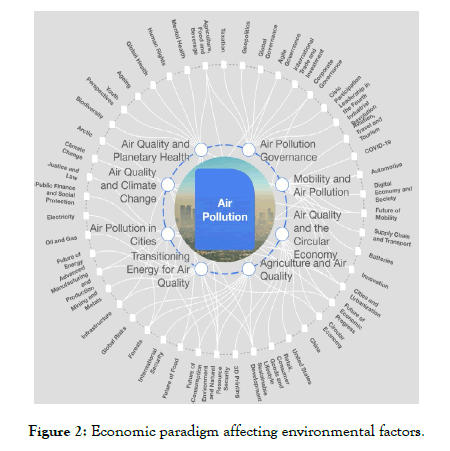
Figure 2: Economic paradigm affecting environmental factors.
Clark learned how to be a QE due to law and linguists where the need was to ask questions, find meaning of words and get definitions. After earning his 2nd PhD, he observed, what science was in practice when he was hired as the first Manager of Energy Technology Transfer at Lawrence Livermore National Laboratory (LLNL) in Northern California.
Clark teaches and lectures on the need to understand definitions in language which are needed in economics for numbers, data and statistics. In short, linguistic theory (Figure 3) is the practice on how surface (words) is defined as deep structures for meanings, understanding and applications in languages, sentences and paragraphs. Noam Chomsky Reflections on language made linguistics into a science [6]. That is what he is doing in economics through Circular Economics (CE) and Qualitative Economics (QE). As the example graph below shows in Chomsky’s books and noted by Clark with permission by Chomsky in chapters, papers and books that make linguistics into Qualitative and Quantitative Economics (Q2E).
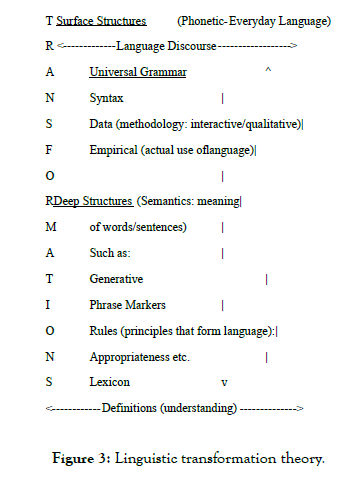
Figure 3: Linguistic transformation theory.
All of these areas are what motivated Clark to work on the solutions for climate change through linguistics and technologies by getting involved with groups that saw the need for changing economics (and its related areas such as finance, investment and accounting etc.). The work of science is primarily with people in groups of teams who research a problem from many different scientific areas such as chemistry, physics and engineering. Since scientists need to define and state what they are doing, the process is qualitative-the use of language.
Scientists create a hypothesis that needs to be examined in theory and then practice. The use of data, statistics and graphs are done with explanations for the quantitative data. Then scientists (and soon economists) will write and explain what their data and numbers prove. Most of what scientist is about is create a qualitative hypothesis (or two) that sets their theories and hypotheses for more tests which can be observed, discussed and debated through papers (qualitative) with numbers, data and statistics (quantitative). The final scientific result is in a Science Journalwhere the theory and data are tested or used by others. This series of re-testing is to validate what was done by others earlier. In some cases, it is weeks but in others it could be years and decades later.
The basic need for the Circular Economics (CE) book is to define and constantly monitor economics on all levels. The starting points have already taken place as noted below with some economic policy organizations. However, the key area is for the academic universities around the world need to move away from linear into circular economics. This is critical need now as there are no academic books on CE which are out as of 2020. Thus flowing paper that Clark and Bonato on Circular Economics published over the last decade set the academic and educational need for use in researching cases, finding evidence and providing political, financial, climate solutions plus more due to the COVID-19 pandemic and for the future of the NetGen.
The Ellen Macarthur Foundation has teamed up with Clark for his CE book so that they are working together now and in the future. ARUP Report with cases of circular economics such as Apple and Google. The CE book provides cases by their Directors of Sustainability at the GreenBiz Circularity Conference 2019. The connection with CE and Sustainability is good and one that Clark has been doing for over a decade now. However, there are many Qualitative Economics (QE) issues on ‘sustainability’, ‘resilience’, ‘transparency’ and more.
The Report by the European Union enacts CE (Brussels) in January 15, 2015. Figure 4 illustrates Circular Economics the practical way from the EU Commission.
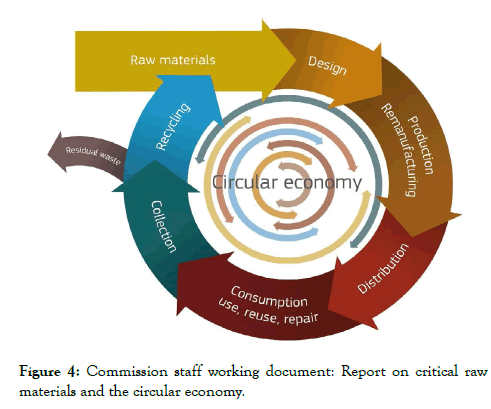
Figure 4: Commission staff working document: Report on critical raw materials and the circular economy.
For example in the Circular Economics TOC cases from the medical profession whereby doctors go into other professions and businesses related to their medical backgrounds, expertise and work, but now into new areas where they can apply their medical education, work and experiences. As the Mac Arthur Foundation points out plastics can be reused (that is recycled) from their use for cups, bottles etc. into products such as clothing in the fashion industry. Other cases are how to reuse, remake and restore waste so that it can become a new business from previous products. This report lays out a vision for a system that not only puts a stop to these damaging trends, but also summons the creative power of the fashion industry to develop a new textiles economy which is circular as noted below. In such a circular economic system, clothes are designed to last longer and be worn more. New business models allow clothes to be rented, resold, or recycled more easily. No toxic substances or pollutants are released when clothes are produced and used.
Washing clothes releases half a million tons of plastic micro-fibres into the ocean every year (Figure 5). What Good Fashion located in Netherlands, did is create the processes for reuse of plastics for the fashion industry which lacks the resources, tools and incentives to put plastics into both environmental and climate good practices, solutions and product demand at very low sales costs.
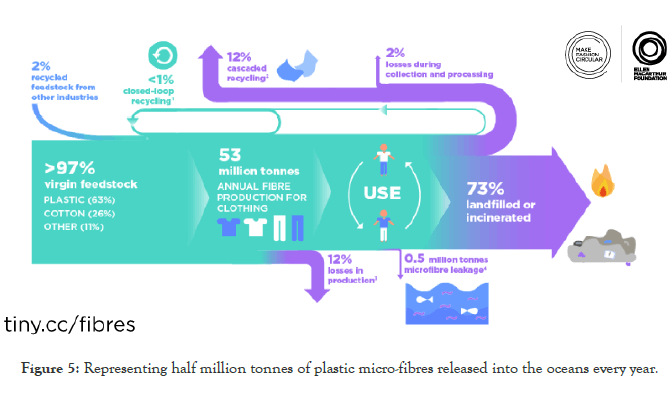
Figure 5: Representing half million tonnes of plastic micro-fibres released into the oceans every year.
The new plastics economy is redesigning fashion’s future. Due to circular economics in the EU there are many fashion industriesthat use the current take-make-dispose model (Figure 6) which is the root cause of EU’s environmental problems and economic value losses. Every second, the equivalent of one garbage truck of textiles is land filled or burned. An estimated USD $500 billion value is lost every year due to clothing being barely worn and rarely recycled [7,8]. If nothing changes, by 2050 the fashion industry will use up a quarter of the world’s carbon budget.
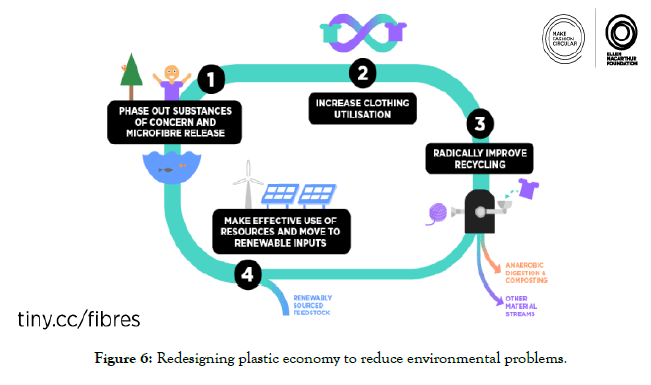
Figure 6: Redesigning plastic economy to reduce environmental problems.
In addition to the innovation platform, which focuses on scaling sustainable innovations, Good Fashion has started a movement to help people envision a world where all fashion is good. Key to this movement there is the experience of innovative, one-of-a-kind museum designed to educate, empower and equip visitors. Good Fashion becomes the key factor in the lives, families and works which needs to spread the word by sharing these sites with others. There was never a linear demand for clothes. The use of plastics to make these dresses for women was creative (Figure 7) and also a good reuse of plastics that were traditionally dumped in trash, the oceans and other places. The world has changed in not only fashion but other areas reusing products from batteries to electronics (televisions, computers and cell phones) plus more. Once the products are reused, they can then be reused again and again when worn out or outdated. New products will be made. The environment is protected as well as the creation of new jobs, businesses and industries that are local so that they hire workers and support local and national economic needs.
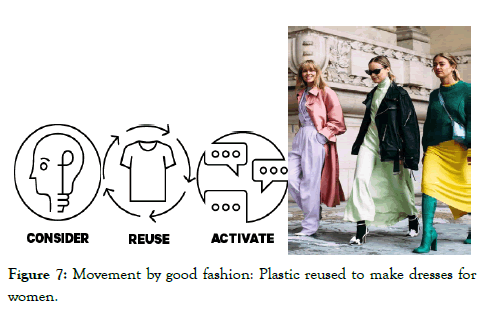
Figure 7: Movement by good fashion: Plastic reused to make dresses for women.
Consider another case in point by Bruce Hector MD (Medical Doctor) who left his medical practice in a major hospital in Southern California (SC) in order to start a chain of 15 on-site medical centres that were located in 15 locations around SC. But that was not his only action as a ‘circular entrepreneur’ because he sold that business and then created a new one, titled Earth Accounting (EA). Bruce felt and knew that people wanted to read labels or bar code on products in order to evaluate in real time (shopping) the health, value and environmental impact of goods. The results for him were incredible, but not only profitable. In fact, now he is back supporting his medical centres since the new owner who was a decade younger than him, passed away due to a heart attack. What Bruce did next was to get involved in other businesses related to EA [9].
There are many other cases, especially in the EU and China which are detailed in the Circular Economics (CE) book. One significant case of China was enacted by Hanergy Group launches all solarpowered cars which is China’s largest renewable energy (hydro, wind and solar) company. Further and even more dramatic use of circular economics occurred on July 2, 2015, when Hanergy Group announced the creation of their which one car is now being produced in the EU and in China 300 busses that all all-solar powered buses operating now.
Hanergy Headquarters and Research Center are located in Beijing where for almost a decade they produced thin-film solar for roofs and also used for making clothing products and other products seen below (Figure 8). Hanergythin-film solar applications are also for thin-film solar produced by Hanergy Group on its corporate roofs in Beijing proving 43% power for all eight buildings.
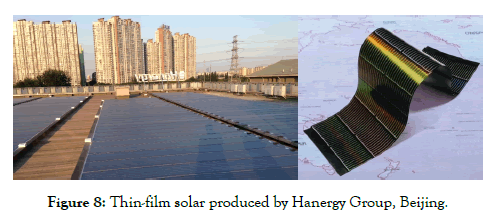
Figure 8: Thin-film solar produced by Hanergy Group, Beijing.
Hanergy then applied their thin-film solar in areas such as in their corporate facilities including windows, walking areas, streets, back packs, bicycles and patios which get power from the sun. Hanergy used thin-film solar as part of CE for other uses and products as seen below (Figure 9).
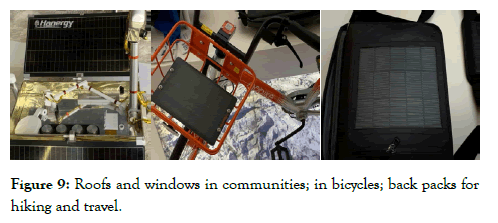
Figure 9: Roofs and windows in communities; in bicycles; back packs for hiking and travel.
There are more CE cases in China and other countries where Green Development or the Green Industrial Revolution is the government policy that enacts circular economics [10]. Now due to the worldwide spread of COVID-19, there is the need for the next economics because traditional linear economics is gone so the world needs CE to be implemented.
Circular Economics, Environment, Green Development is real and needed as climate changes and now COVID-19 are damaging to people, communities, cities and nations around the world. The new ‘green’ (e.g. solar, wind, geothermal, water and other) resources use technologies to address climate change, waste issues and increasingly scarce resources. In order to reduce and reverse these climate problems, there is the global need for saving fresh air, providing green environmental resources to restore the climate for future generations [11].
The economics of climate is rarely discussed or recognized for being a key factor to stop climate change as well as financing the green planet where everyone lives today [12]. We need to think outside of the box about what and how we can change every perspective of our daily lives. Economics is the key factor for affordability, payroll, defining, numbers, data, finance to plan for today and tomorrow as Circular Economics (CE) is The Next Economics (NE) [13].
Economics needs to go beyond classical traditional economics which is ‘linear’-flat for ‘supply and demand’-where the government is an ‘invisible hand’. This neoclassical definition is the paradigm of Adam Smith over a century ago which has never been true. Government then and today has always been involved in economics. There is more such as there never a demand for laptop computers? or for cell phones? or even wireless energy systems?
Research methodologies include traditional research methods finding data, citations and reports. Case in point is the work of Mr. Bonato, MBA, ReMediain Milan, Italy which as a good example since the company takes media technology products like television sets, computers, iPhones to produce or supply other companies with parts to build other products. Also, there are many more examples of CE which change dramatically every day. Below is the comparison of Neoclassical Economic (19th century) to Circular Economics (21st Century).
What is critical to understand and apply from the CE book is how economics needs to become a science. To make economics a science it needs to be both Qualitative and Quantitative Economics (Q2E) [14]. However, economics was based on linear theory of Adam Smith in late 19th Century. For decades and every much now based on statistics, codes, models and graphics. Then the primarily economic model was based on supply and demand enacted over four decades ago.
Clark and his younger brother, Wayne, are writing papers about baby boomers created the new economics. The Millennials (children of baby boomers) need to establish around the world a new economic model that needs to be enacted soon. The world economy has dramatically changed now due to the global spread of the COVID-19 pandemic. The economy recovery will take time and more flues spreading. While many recent reports are verifying that the pollution around the world has declined dramatically, there is uncertainty about what will come next [15]. Given the tensions in global trade the UN and governments must take actions however in very different conventional neo-classical economic model from the past. The next economics is circular economics and it is here around the world already taking actions since 2014 as the graph below shows (Figure 10).
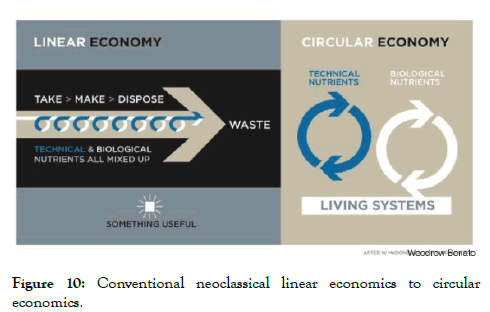
Figure 10: Conventional neoclassical linear economics to circular economics.
The updated QE is also based on linguistics which as a science presents examples of reused, recycled resources are part of most developed and now developing countries. Low resource efficiency can lead to a turnover for big businesses, which is also what the traditional economic model does not account for or enact.
The world is now in a Green Industrial Revolution as Clark and Cooke wrote [10]. Clark has other books on how communities, cities, states and nations need to be smart green healthy cities and others [16]. Now in 2020, the NY Times on another crisis already here globally but which are the problems of global oil and natural products being replaced which is good for the environment but not in the traditional supply and demand theory with government being the invisible hand.
Therefore, a new economic model is needed and enacted which is qualitative and quantitative, hence more scientific. The CE case on the issue what companies and especially governments need to do soon. The point is that reusing of plastics, cans and bottles is something that many local, state and national governments have been doing for decades now [17]. However now there are more and more plastics which are often dumped in large areas or put into rivers and oceans. What CE does is create new companies that take plastics and use them for fashion and shoes as well as packaging. The point is that the reuse of clothes from plastics needs to have other products and even more as noted below (Figure 11).
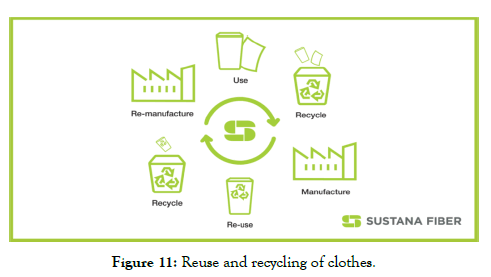
Figure 11: Reuse and recycling of clothes.
As noted before ReMedia is a great case on how media parts can be reused in many ways that enact CE. Recently an article Forbes (July 18, 2019) highlighted how people can recoverconsumer materials for re-use into recycled cups, bowls, food grade packaging and more. Now due to climate changes and the need for economics to become a science, we must treat economic activities like a science, studying the meaning and definitions of numbers, data and events.
Forbes points out that over 50 billion single-use containers (e.g. coffee, tea and water) end up in landfills every year. These waste materials can be redone and made into new environmentally friendly products such as Starbucks Coffee. Keep in mind that for bottles and cans, most are now sold in USA for $.05 to $.10 per bottle more so that people will be encouraged to recycle them and get money back from shopping centres, companies and suppliers (Figure 12).
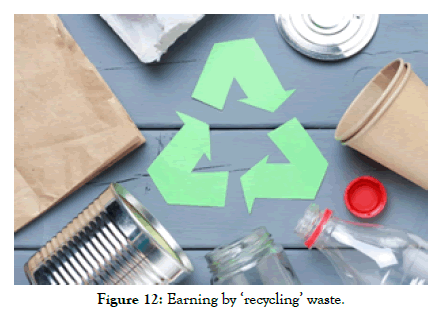
Figure 12: Earning by ‘recycling’ waste.
CE is the new practical theory that is enacted with goals, methods and actions with new technologies due to CE that can adopt to make limited resources to be used in more sufficient ways. The main difference between the classical Adam Smith economic model and circular economy are consequences of products and how they are used over time. Companies that adopt the circular economic model is designed in a product manufacturing way that after consumer’s consumption the waste can be collected, recycled, remanufactured (or repaired) and then reinvested into the consumer market such as ReMedia has done in Milan, Italy where it started and now ReMedia in EU leading the way for many other companies to do the same thing with their products.
Therefore, less waste will be produced and thus this model can use all the resources in the most efficient ways and do the least harm to the local and global environments [18,19]. Moreover, CE can then bring more opportunities into industries. Case in point comes from the United States Business Council for sustainable development who have started “The Materials Marketplace” to be an award-winning regional and national platform that connects businesses to develop and support reuse and recycling business opportunities that:
“Through our platform, traditional and non-traditional industrial waste streams are matched with new product and revenue opportunities, ultimately enabling the culture shift to a circular, closed-loop economy. In addition to diverting waste from landfills, these recovery activities generate significant cost savings, energy savings, and create new jobs and business opportunities” [20].
See below (Figure 13) the example of how the materials in any marketplace can and does work:
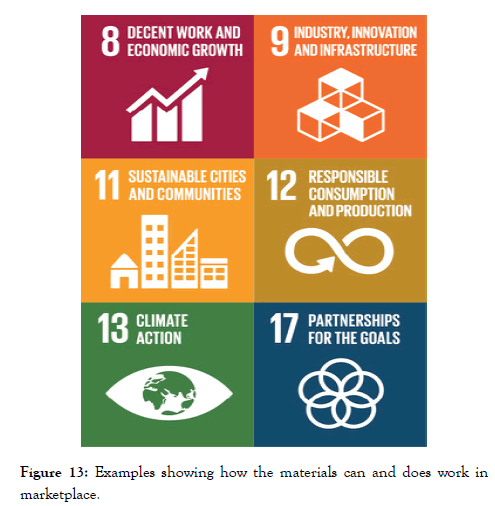
Figure 13: Examples showing how the materials can and does work in marketplace.
Unlike the European Union enacted CE, the USA does not know much about CE, especially in academic university world [21]. Only a few people in government, academics and even businesses know what circular economics is about and how to enact it. However, people and governments need to change because resources are decreasing day by day as everyone, governments and communities recover from COVID-19. This paper raises public, academic and science awareness to adopt a more efficient way of operation. How and what can industry do to make their business profitable in the long run? What government can do to help industry grow? The next generation needs to enact circular economics as sustainability for the answers to climate change [22,23].
This model is used in the EU and has been around in some areas of Western Hemisphere, but needs to be done from government policies, laws and funding. China is now doing that with the EU when they signed a Memorandum of Understanding (MOU) in July 2018 to do just that. There are other cases of circular economics being done in Japan, Korea with Asian nations who are getting very interested as well. Based on the supply-demand theory of the traditional economics that never worked, there is a need to enact CE which reuses waste and creates new businesses or opportunities.
Consider more cases of circular economics expanding such as the European Union enacted CE. The new plastics economy is the example of how plastics are reused and made into other products ranging from bags, clothing fashion into materials as buildings, transportation, walls plus more (Figure 14).
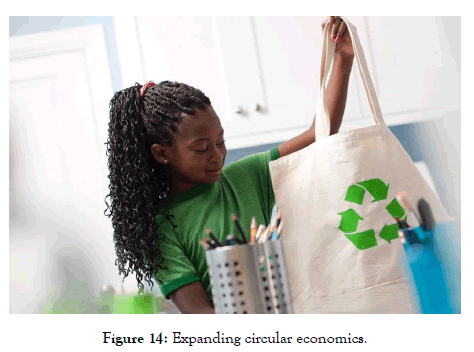
Figure 14: Expanding circular economics.
The other CE case Starbucks Coffee is that they have over 3,000 stores around the world and enacted a CE policy or all the stores in order that all materials like plastic straws, bags and cups that are remade into other products. Starbucks calls this‘Recycling Re-imagined’as their new guide incorporating recycling into the broader content of how CE means “zero waste” [24].
The science of chemistry is important, the issue is to be able to recycle and reuse the plastic that is made and used for bottles, packaging and more. Now, plastics can be gathered from reusable products that provide a resource from which to make new products. Moreover, collection systems are still too expensive and inefficient which does not help industrial companies to abandon the traditional production systems based on the linear (flat economic) transformation of materials into products and their disposal once they are consumed.
Therefore, the EU Commission has taken further simplifications to promote increased efficiency of collection systems through the circular economy paradigm. Hence by integrating these systems with the upstream industries that make use of recycled components and raw materials from products entering, the end of their life stage can be profitably met as well as protecting the environment from climate change.
The enactment of circular economics is a strong key methodology that has been proven in some fields of academic research, study and plans. Stockholm Sweden Resilience Center has importanttechnologies that have been crossed which impact others in a circular manner. For example, the MOST (Molecular Solar Thermal Energy Storage) system that is a round-trip energy system.
All solar powered cars show
Since 2013, the sales volume of energy vehicles in China has been maintaining steady growth. At the 2016 Beijing International Car Showlaunched 147 new energy vehicles as they combine the potential increments of new energy vehicles market with the structural adjustment of products. In Asia 112 out of the 147 new vehicles released by domestic car enterprises which have numbers that show how they are all occupied in a leading role in cars. Asia even surpasses Europe and the US. What S. Korea and Japan did in the mid-1990s was create ‘hybrid’ cars using regenerative braking, licensed from LLNL. The Prius was first and sold globally, especially in the state of California. This is another case of CE since the regenerative braking was invented by scientist as LLNL for other purposes. Then in the early 1990s there were other applications of the technology. LLNL asked all the USA car makers to license the technology-for free-as the money to research and make it the technology was from the US Department of Energy [25].
All the USA car manufactures in Detroit (Ford, Chrysler and General Motors) turned the opportunity down. Then Toyota wanted to license regenerative braking which we did for them. The American car companies then were profitable with fossil fueled only. The results were a decline in the USA auto industries with even Chrysler about to bankrupt and the other car manufacturers have had series problems. Toyota became and still is the biggest car company in the world and now has gone beyond regenerative braking to other cars using the CE model. Now more and more car companies are sell all EV cars.
Another case from the auto industry is the new Tesla background and other sales have gone up in California and even China. Yet the problem still exists: where do EV cars charge their cars? And what is the source of energy for these re-charging places? Most recharging energy comes from natural gas and in China coal. The all solar powered cars have brought about a positive effect on China’s being the world’s largest new energy vehicle market. The development momentum of new energy vehicles cannot be neglected. At the Hanergy Research Centre for UIR shows Clark with his students in July 2018. The entire building is covered with thin film solar which is one of the areas that HG focuses on aside from hydro-electric dams and related renewable energy technologies.
After visiting the Exhibition, people will find that new energy vehicles are mainly driven by charging posts, gas-electric hybrid and hydrogen. In China,electricity generation chiefly depends on coal and natural gas. Even the Tesla vehicles can cause pollution while driving as the recharging cars is needed from power generation sources like natural gas. Below are two of the three Hanergy allsolar powered cars (in Mandarin at the public release of the cars in July 2015) (Figure 15).
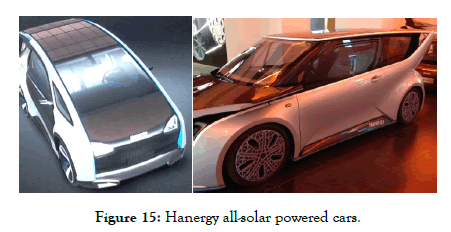
Figure 15: Hanergy all-solar powered cars.
However, relying on high-performance gallium arsenide and solarpowered thin-film technologies to produce electricity, the wholly solar-powered vehicles which will be released soon by Hanergy will get rid of the dependence on fixed charging facilities and realize the zero-consumption of fossil energy and the zero-emission of pollutants.
All of the Hanergy building complexes have all thin-film solar that provides 43% of its power everyday (and storage) for night-time and cloudy or rainy days. Hanergy launched the strategy of its mobile cars using all thin-film solar energy in July 2015 for cars and buses. By virtue of its leading thin-film solar power technology, Hanergy made comprehensive efforts in the fields of BIPV, household PV power generation, agricultural application, distributed power station, mobile energy+, ground-mounted PV power station, etc. Meanwhile, Hanergy also made overall arrangementin the fields of the civilian market of mobile energy, new energy vehicles, solar powered air vehicles, etc.
On October 15, 2015, an all solar-powered concept car independently developed by Hanergy made its debut during the National Week of Mass Innovation and Entrepreneurship. On the first day of the week, after learning knowledge about relevant technology and design in detail, Premier Li Keqiang and the Vice Premier Zhang Gaoli gave Hanergy’s all solar-powered vehicles received recognition and encouragement.
Then on 2nd of July in 2016, with further technical break through, the all solar-powered vehicles were released by Hanergy to the public (globally too) for over 4,000 people to see and even some drive the cars. At its news conference, Hanergy released four totally solarpowered vehicles of four different styles and one solar powered bus. Being different from the traditional electric vehicles, these four totally solar-powered vehicles, combine the world’s most efficient Ga-As thin-film solar-powered chips, with amazing body design.
There are many more cases of the next economics which are circular economics.The Circular Economy is global and therefore brings together local concerns to create opportunities for social integration and cohesion [26]. The chart below (Figure 16) shows how the circular economy works and has been working in different countries and communities already.
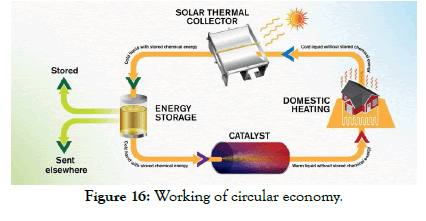
Figure 16: Working of circular economy.
As the world is round not flat, which is Circular Economics thatshows what happens in one part of the world travels or moves to other global areas due to wind, rain, ocean water, fires, earthquakes and now pandemics. Circular Economics has the answers to drastic problems like COVID-19 pandemic to provide people with viable, safe and strong futures for our families and children.
The paradigm transition to a Circular Economy is the answer to some of the main challenges of our time. It can help to preserve resources that are increasingly scarce and subject to greater than ever, environmental pressure. Circular Economics has already increased Europe’s economy and competitiveness, by generating new business opportunities as well as innovative, more efficient and new ways of producing, consuming and creating new products.
Finally, the only economic and political system that can ensure a viable safe future for the next generations of citizens (and refugees) is that of a rapid transition to a green industrial system. The circular economy paradigm is the enactment of the green industrial systems providing economic, family and cultural support for everyone. Businesses and governments need to enact production cycles so as to eliminate the concept of waste, through optimized models for the reuse of products, disassembly and recycling of goods.
The solutions to climate change are circular due technologies, public policies, health and especially businesses. The time to move into circular economics as sustainability for all communities around the world is not a decade or more from now. It is today.
Citation: Clark II WW (2020) Circular Economics is the Next Economics. J Climatol Weather Forecast 8:254. doi: 10.35248/2332-2594.2020.8.254
Received: 02-Jun-2020 Published: 23-Jun-2020, DOI: 10.35248/2332-2594.2020.8.254
Copyright: © 2020 Clark II WW. This is an open-access article distributed under the terms of the Creative Commons Attribution License, which permits unrestricted use, distribution, and reproduction in any medium, provided the original author and source are credited.